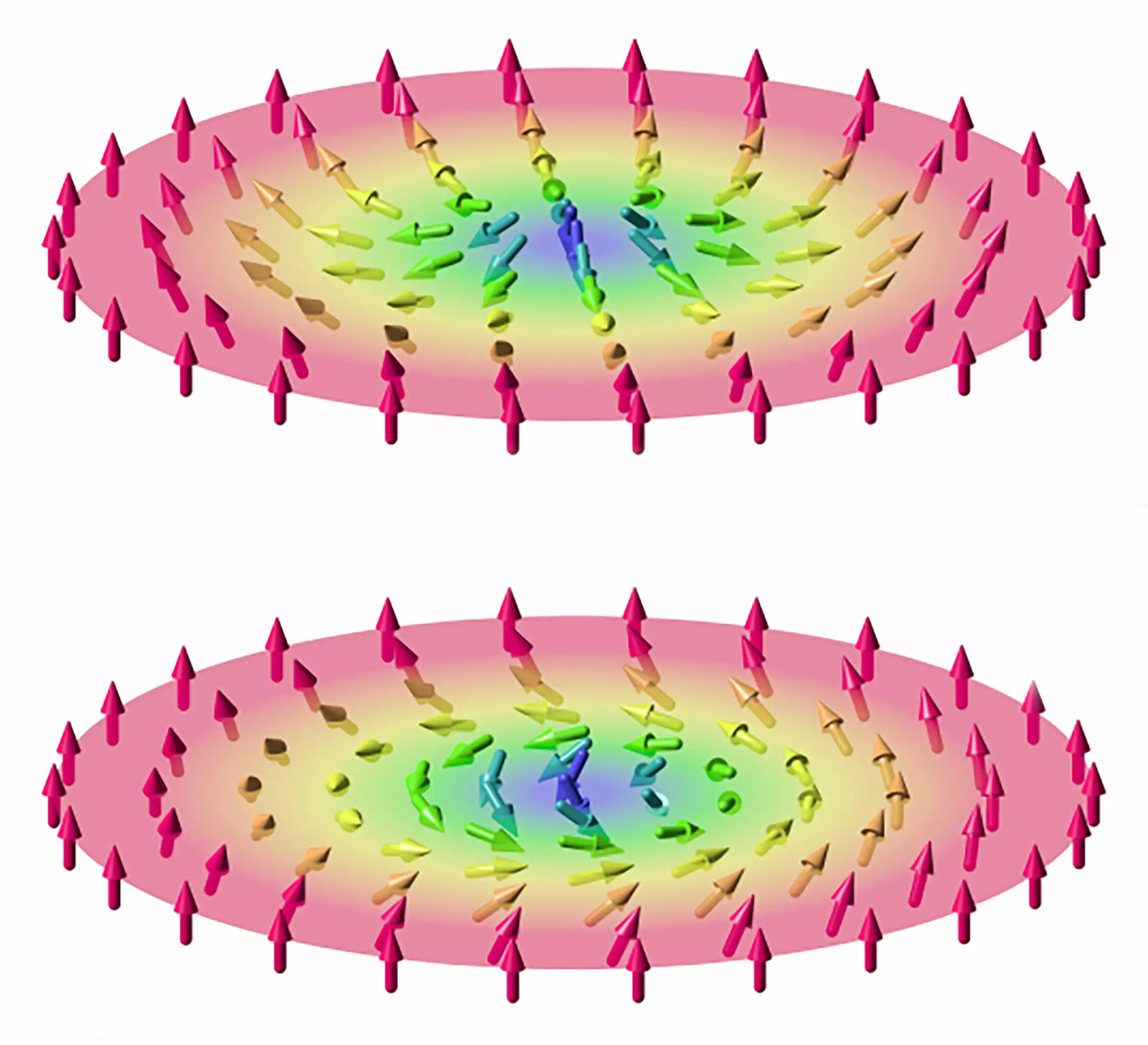Innovations in technology continuously push the boundaries of what is possible, leading to new and exciting opportunities. Researchers at the National Institute of Standards and Technology (NIST) are at the forefront of exploring the potential of magnetic skyrmions, intricate tornado-like atomic magnetic arrangements, to revolutionize information storage and processing. By employing neutron imaging and advanced reconstruction algorithms, the team has unraveled the 3D shapes and dynamics of these small atomic structures. This article delves into the significance of skyrmions in spintronics, the challenges in their formation, and the possibilities they offer for the future.
Traditional methods of information processing relying on binary electrical charge states are limited by the constant need for refreshment, resulting in heat generation and slower switching times. By harnessing stable magnetic states, spintronics offers a revolutionary alternative. This emerging field utilizes the inherent magnetic polarity, or spin, of atomic particles and nanostructures instead of electric charge. By reducing the current required for data manipulation and storage, spintronics not only promises a significant decrease in energy consumption but also allows for faster state transitions.
Within the realm of spintronics, one particularly promising candidate is the magnetic skyrmion. Named after the British physicist Tony Skyrme, skyrmions manifest as intricate vortex-like formations of atoms. These formations arise naturally in certain atomic lattices as a response to the surrounding atoms’ magnetic and electrical properties. In two dimensions, skyrmions assume the shape of disks, with each atom pointing in different directions based on their positions. However, in bulk materials, they can stack up vertically, resulting in the formation of 3D tubes that extend from the top to the bottom surfaces.
While a uniform and consistent shape of each skyrmion tube would be ideal for data storage and manipulation, the reality is far more complex. Defects and asymmetries in the lattice surrounding the skyrmions cause the tubes to curve, twist, bifurcate, or even terminate. Understanding the origins of these effects and developing methods to control them is crucial for harnessing the full potential of magnetic skyrmions. The team of researchers led by Michael Huber at NIST aims to unravel the underlying causes behind these variations in shape.
In their pursuit of understanding the behavior of skyrmions, the research team utilized an innovative technique called neutron tomography. The first author of the study, Melissa Henderson from the University of Waterloo, prepared bulk samples containing 3D stacks or tubes of skyrmions in a cobalt, zinc, and manganese lattice. These samples were subjected to neutron beams and rotation, analogous to a medical CT scan, to capture a series of “slices.” These slices were then reconstructed using a shape-reconstruction algorithm to generate a comprehensive 3D image.
Through this groundbreaking study, the researchers successfully linked various localized defects in the lattice to the shapes of the skyrmion tubes. In ideal crystal structures, perfectly straight tubes would permeate from one surface to another. However, the reality of imperfections in crystals and magnetic defects disrupts this ideal arrangement. The team’s findings provide invaluable insight into how different parameters influence the shape and propagation of skyrmions. By visualizing these objects and studying their responses to parameter changes, scientists can pave the way for future materials tailored for spintronics.
Although the concept of utilizing magnetic skyrmions for information storage and processing may seem exotic now, the researchers envision a future where these advancements become mainstream. In as little as a decade, consumers may find themselves purchasing hard drives fully based on spintronic properties. With higher storage densities and significantly improved efficiency, this technology holds the potential to revolutionize the electronics industry.
The exploration of magnetic skyrmions opens up exciting possibilities for the future of information storage and processing. By delving into their formation, shape variations, and responses to parameter changes, scientists inch closer to harnessing the full potential of spintronics. Through innovations like neutron tomography and sophisticated reconstruction algorithms, researchers are pushing the boundaries of what is possible. As the vision of spintronics becomes a reality, it is only a matter of time before this transformative technology permeates our everyday lives.


Leave a Reply